
Related
Topics
Guests
- Gareth Porterhistorian and investigative journalist specializing in U.S. national security policy. His newest book is called Manufactured Crisis: The Untold Story of the Iran Nuclear Scare. His recent article for the Inter Press Service News Agency is called “U.S. Demand for Deep Centrifuge Cut is a Diplomatic Ploy.”
Secretary of State John Kerry says he is returning to Washington, D.C., to consult with President Obama following talks with Iran over its nuclear program. Speaking on Tuesday, Kerry cited “tangible progress” on key issues, but said “very real gaps” remain ahead of a Sunday deadline. Iranian Foreign Minister Mohammad Javad Zarif says Iran could freeze its nuclear capacity in exchange for sanctions relief, but Kerry would not say if the United States would agree. The main dispute is over Iran’s uranium enrichment program, which Tehran claims it will need to expand to fuel its nuclear power reactor. The United States counters that this would allow Iran to enrich enough uranium at a high level to make a nuclear weapon, and wants Tehran to cut back sharply on its enrichment capability for as long as 20 years. We dissect the negotiations with investigative journalist Gareth Porter, author of the book, “Manufactured Crisis: The Untold Story of the Iran Nuclear Scare.” Porter recently returned from a trip to Tehran where he interviewed top Iranian officials, including Zarif and the country’s nuclear chief.
Transcript
NERMEEN SHAIKH: Secretary of State John Kerry says he’s returning to Washington, D.C., to consult with President Obama following talks with his Iranian counterpart over Iran’s nuclear program. Speaking on Tuesday, Kerry cited, quote, “tangible progress” on key issues but said, quote, “very real gaps” remain ahead of a Sunday deadline. In an interview with The New York Times, Iran’s foreign minister, Mohammad Javad Zarif said Iran could agree to freeze its nuclear capacity in exchange for sanctions relief. But Kerry refused to say if the United States would accept that deal.
AMY GOODMAN: For more, we go to Washington, D.C., where we’re joined by Gareth Porter, historian, investigative journalist, specializing in U.S. national security policy. His new book is called Manufactured Crisis: The Untold Story of the Iran Nuclear Scare. He has just returned from a trip to Tehran, Iran, where he interviewed Iran’s foreign minister and the nuclear chief. His most recent article in Inter Press Service is called “U.S. Demand for Deep Centrifuge Cut is a Diplomatic Ploy.”
Gareth Porter, why do you say that? And can you assess the latest developments in the Iran nuclear talks? Kerry just returned from Vienna.
GARETH PORTER: Well, you know, this set of negotiations has been portrayed for the last few months, particularly by the Obama administration, as very, very difficult, because the United States has been making its most extreme demands, really, on Iran in terms of the level of enrichment capability that would be allowed under the agreement. The United States has been conveying the idea that Iran would have to accept very, very deep cuts in its enrichment capability under the deal, and that has really portrayed the talks as very difficult to reach agreement on. And I think that has been the—that’s been the dominant impression conveyed by the news media, of course, over the last few months. But those signals have changed dramatically just in the last few days. And what has now appeared to be true is that the United States and Iran are really close enough to a deal so that if the United States were to make a political decision in the next few days, I think that it’s still possible they could reach agreement by the deadline on Sunday. So I think that situation has really changed quite dramatically.
And the problem that we have seen in the past few months has indeed been that the United States has made demands for as few as 500 to a thousand centrifuges out of a total of nearly 20,000. That, of course, would have been unacceptable to Iran. But the reality is that Iran has always been ready to make a deal for roughly 10,000 of its centrifuges remaining in operation under the deal, because that is how many have actually been operating for the last couple of years. Half of their centrifuge force has been, in fact, inoperable; it has not been hooked up. And it’s clear that the Iranians have always been ready to make a deal, really, to trade off roughly half of its centrifuges in return for being able to, in the longer run, have an industrial-strength centrifuge force. And that is really the question that remains unresolved: How long is this deal going to last? I think that’s the final question that has to be negotiated. I think that the United States and Iran have, in effect, already agreed that they can come to a compromise roughly at around 10,000—maybe a little bit less—centrifuges, or what they call separative work units, which is the equivalent of the work of the primitive IR-1 centrifuges that Iran now has in operation.
NERMEEN SHAIKH: Well, speaking to NBC News, Iranian Minister of Foreign Affairs Mohammad Javad Zarif reaffirmed Iran’s claim to a peaceful nuclear program and defended building underground facilities in light of repeated threats from the U.S. and Israel.
MOHAMMAD JAVAD ZARIF: I will commit to everything and anything that would provide credible assurances for the international community that Iran is not seeking nuclear weapons, because we are not. We don’t see any benefit in Iran developing a nuclear weapon. When the United States talk about bombing Iranian facilities out of existence, what do you expect Iran to do? Iran would create a facility that is not susceptible to being bombed. That is what any rational country would do.
NERMEEN SHAIKH: That was Iranian Foreign Minister Javad Zarif speaking to NBC. So, as we begin to wrap, Gareth Porter, could you give us a sense of how much Iran’s negotiating position has shifted since the Rouhani government came to power, and also give us a parallel sense of the shift in the U.S. position with the Obama administration on these nuclear talks?
GARETH PORTER: Well, first of all, the Iranian government, as I suggested earlier, was already clearly thinking about a deal for trading off roughly half of their centrifuges in return for, you know, sort of recognition of its nuclear rights in a deal. That was before the Rouhani government came to office. But what the Rouhani government has added to that is a proposal that Zarif told me about when I was in Tehran last month, which would guarantee that there would be no buildup of any stockpile of low-enriched uranium that could then be used to enrich at weapons-grade level to achieve what the United States has been calling a breakout to the ability to build a nuclear weapon or to have enough uranium at high levels, high level of enrichment, for a nuclear weapon.
That proposal was put on the table in June when the negotiations reached the stage of drafting, so the United States has been aware of that for some weeks now. And the problem with the news media coverage is that that has never been made public until The New York Times covered it just a couple of days ago. So, I think that really is a proposal that makes it possible for the United States to be assured that there won’t be a breakout to a nuclear weapon for years, because the Iranians have been prepared to send off the low-enriched uranium in the form of oxide powder to Russia to be converted into fuel plates for the Bushehr reactor. That’s going to happen for the next seven years, at least. And the real question is: Will the United States accept a relatively short period of duration for this agreement, as little as perhaps 10 years, rather than the 20 years that the United States had proposed, or at least announced that it was proposing, some months ago?
AMY GOODMAN: Gareth Porter, we’re going to—
GARETH PORTER: I think the chances of that—
AMY GOODMAN: We’re going to have to leave it there, but I want to thank you for being with us, author of Manufactured Crisis: The Untold Story of the Iran Nuclear Scare, as we move into our last segment right now.

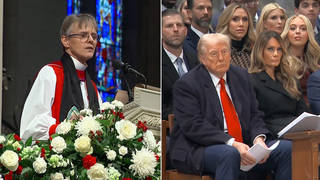
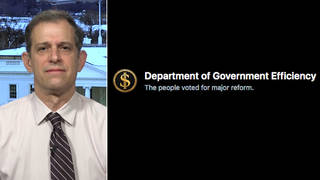
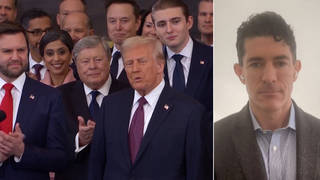
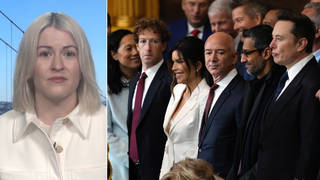
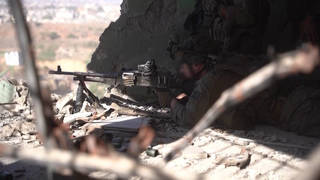




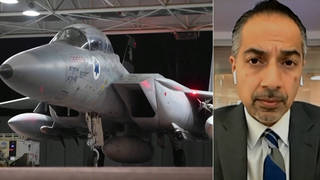
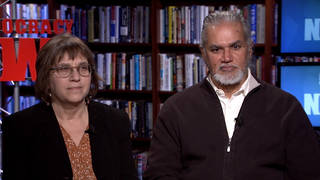
Media Options